Kitchen planning is more than just a layout of furniture and equipment. This is a project of a significant part of the life of the household, therefore it is necessary to approach its development with full responsibility. Our planning guide, as well as a selection of 80 illustrative photo examples, will help you make the right decisions and plan your kitchen plan as efficiently as possible.
10 rules for kitchen planning
Before you start creating a plan for the future kitchen, you should familiarize yourself with the basic rules of ergonomics and safety, furniture size standards and proven design techniques.
- The main rule on which to rely when planning a kitchen is the rule of the so-called work triangle. According to him, the sink, stove and refrigerator should not be arranged linearly, but in a triangular pattern. It is important that the working points are next to each other - at a distance of no more than 180 cm. So the kitchen scenario will turn out to be the most harmonious: first you take the products out of the refrigerator, then carry them to the sink to wash, then the ingredients are cut / mixed and, finally, sent to the stove.
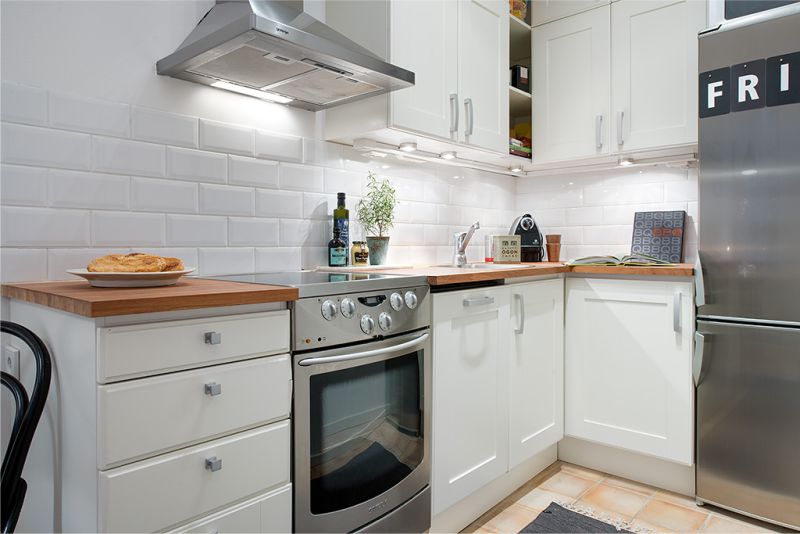
Superfluous rushes, time and effort expenses while observing the rule of the working triangle are minimized
- Kitchen planning begins with determining the location of the sink - it should be located within 2.5 m from the riser. Of course, the sink can be rearranged further 2.5 m, for example, to the window, but in a city apartment this will require at least the slope of the water supply pipe, and at the maximum - the installation of a pump. If you are planning kitchen in a private house, it is best to place the sink by the window - and the cook is more pleasant, and good for saving electricity. Next to the sink put dishwasher and / or washing machine. As a rule, PMM is placed to the left of the car wash, if its user is right handed, and to the right of the car wash - if left handed.
- The next point on the plan is a plate. It should be located at a distance of 40-180 cm from the sink and, of course, closer to the air vent and gas pipeline, if there is one. In the gap between the sink and stove, you can enter the main work surface, where you will cut and mix products. Well, if its length is 90 cm - this is not small, and not too much. On the other side of the slab, there should also be a free gap not less than 40 cm wide - this is necessary according to safety measures.
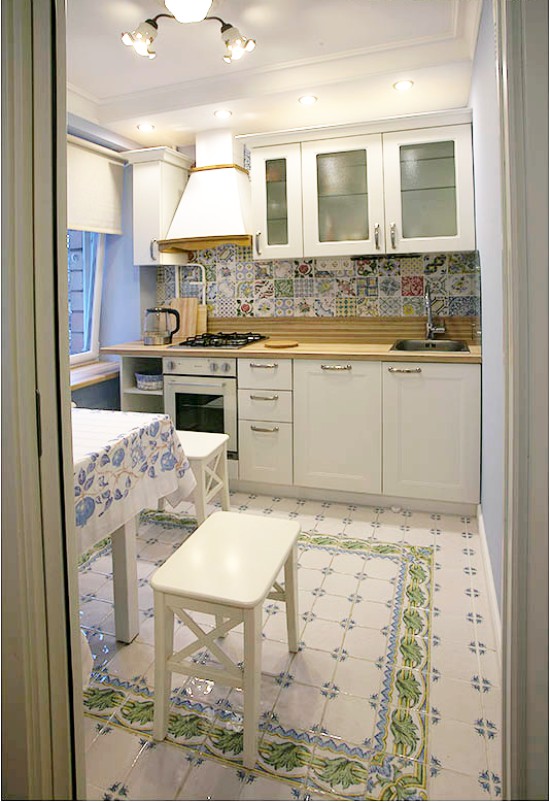
- Important! Placing a slab by the window at a distance of less than 40 cm is not safe and simply not practical.
- The minimum width of the aisles in the kitchen should be about 120 cm. In such a “pedestrian zone”, households can move without interrupting the culinary specialist to cook, get food from the cabinets and refrigerator, load the dishwasher. If the kitchen is a checkpoint, as is often the case in private houses, the passage should be increased to 130-150 cm. In very small and impassable kitchens, 1-meter walkways are permissible.
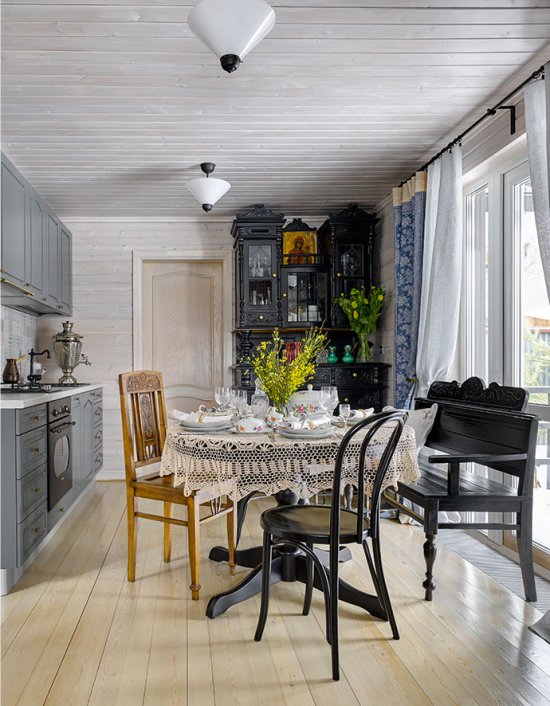
Layout of the entrance of the kitchen in a private house
- It is more convenient to place the refrigerator closer to the sink than to the stove. It can also be built into the unit next to the oven and microwave.If there is an acute shortage of space, the refrigerator can simply be brought out of the kitchen, for example, into the living room or corridor.
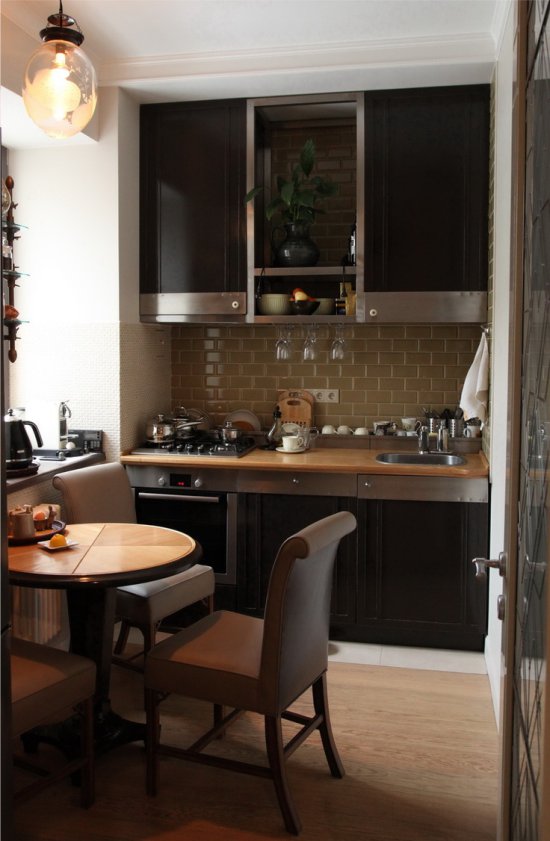
Planning a small kitchen without a refrigerator
- When planning the kitchen, remember that the projections are almost always possible to "get around" shallow cupboards, and niches accommodate storage.
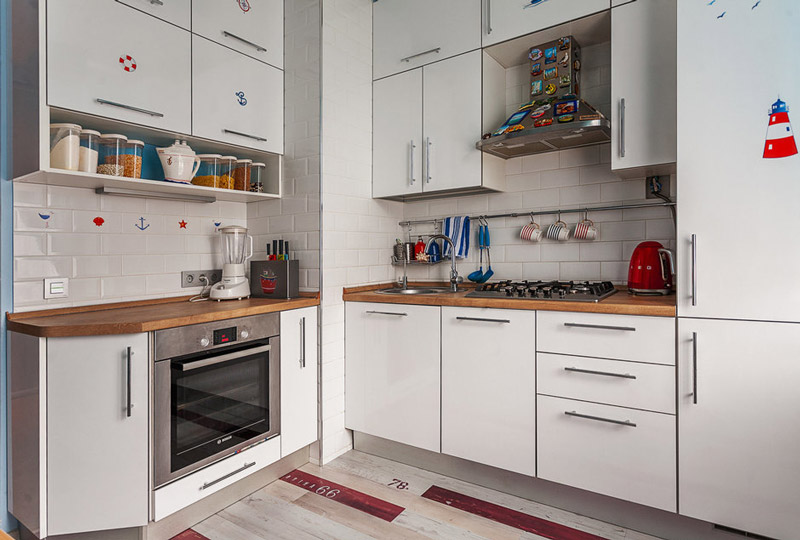
If necessary, you can move the doorways, slightly move them or expand / narrow them. By the way, the doors can be removed, rearranged or replaced with a folding / sliding design.
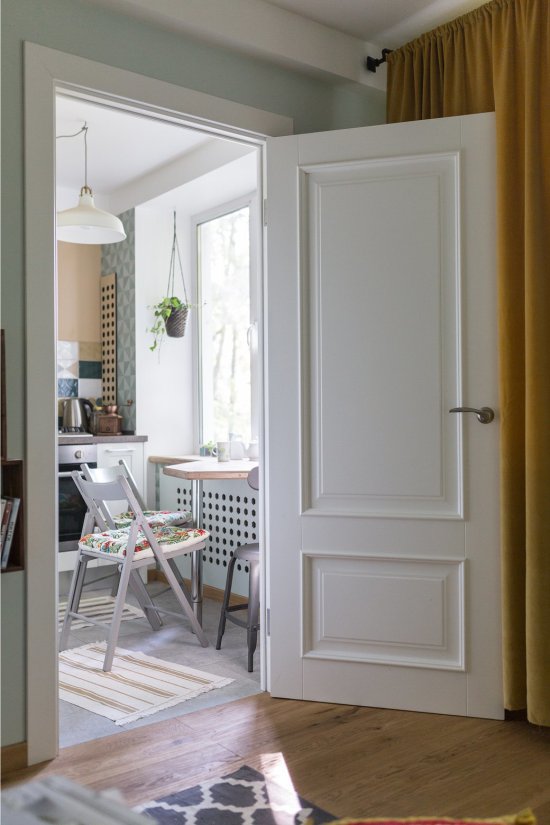
In the gasified kitchen it is impossible to remove the door, but it can be replaced with a folding / sliding door. You can do it easier - just rearrange the hinges to open the door
- The most convenient way is to draw headset layout options in special programs. For example, simple and free planners like Planner5D, SketchUP Pro or online IKEA designer will do.
- To get a clearer idea of whether the layout you have developed is suitable for your kitchen, chalk out the full-size furniture and appliances on the floor and walls. So you can see errors in the plan, resolve doubts or come up with new ideas.
- Keep in mind that to win extra space when planning a small kitchen possible due to the reduced equipment: a refrigerator with a width of 55 cm, a dishwasher with a width of 45 cm, and a washing machine with a reduced depth of 35 cm.
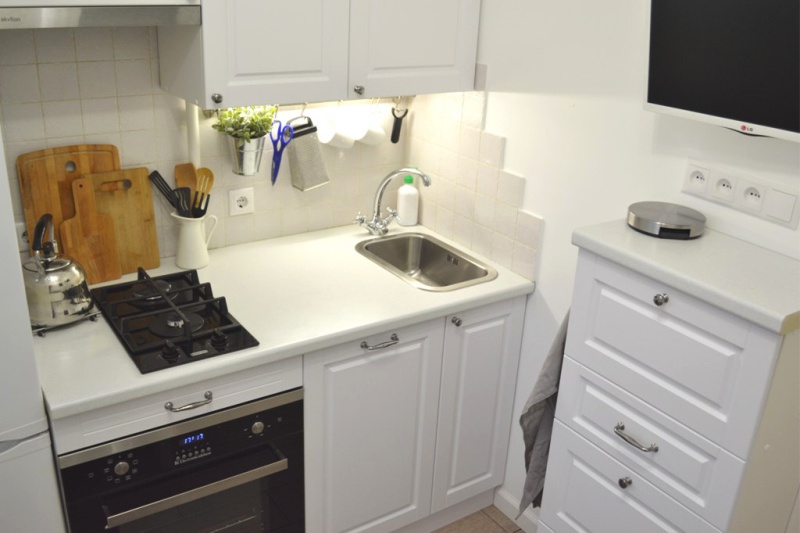
- The layout of the kitchen should take into account the size of the dining area, more precisely the rules of ergonomics:
- The width of the seat should be at least 60 cm, and the depth - at least 40 cm;
- From the edge of the table to the wall / furniture there should be free space for a chair 80 cm long;
- Standard chair has a width of 50 cm and a depth of 40-43 cm, a chair with armrests has a large width - about 70 cm.
See also: Top 10 manufacturers of kitchens according to kitchen.decorexpro.com/en/
Types of layouts
There are 6 types of kitchen layouts:
- Linear (single row);
- L-shaped (corner);
- U-shaped;
- Double row (parallel);
- Island;
- Peninsular.
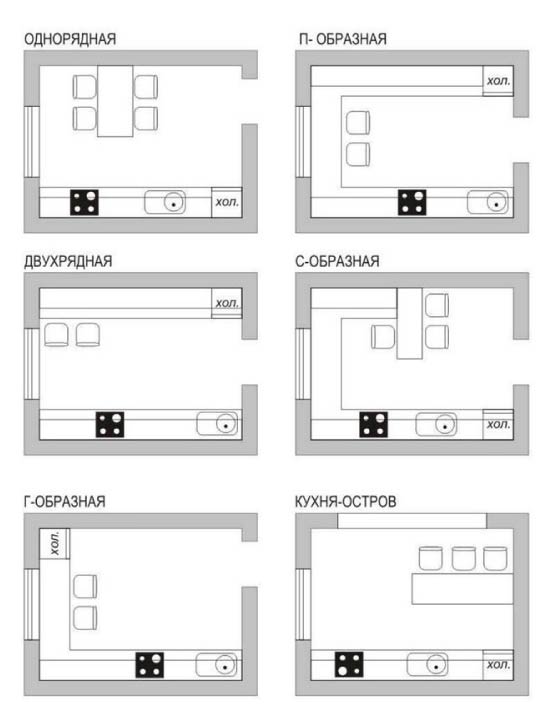
Let's look at each of the types in more detail.
Linear circuit
Pros: The linear layout of the headset is the most compact, versatile and, moreover, simple in design at least due to the absence of corners - and therefore the direct kitchen is a bit cheaper.
Minuses: This option is the most inconvenient layout, since it violates the rule of the "working triangle".
Ideal for: very small and narrow kitchens (up to 2 m wide), walk-through kitchens, kitchen studios and kitchen hallways. Also, linear layout is suitable for those who rarely and cooks little.
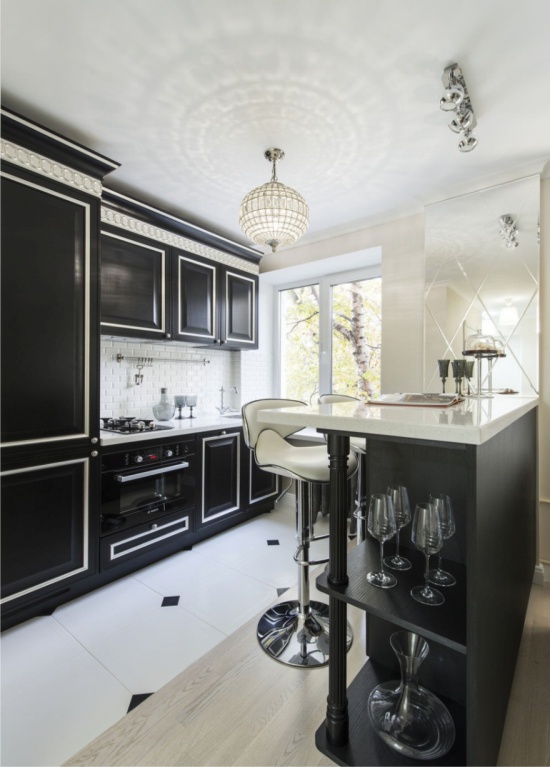
Linear kitchen in redesigned Khrushchev
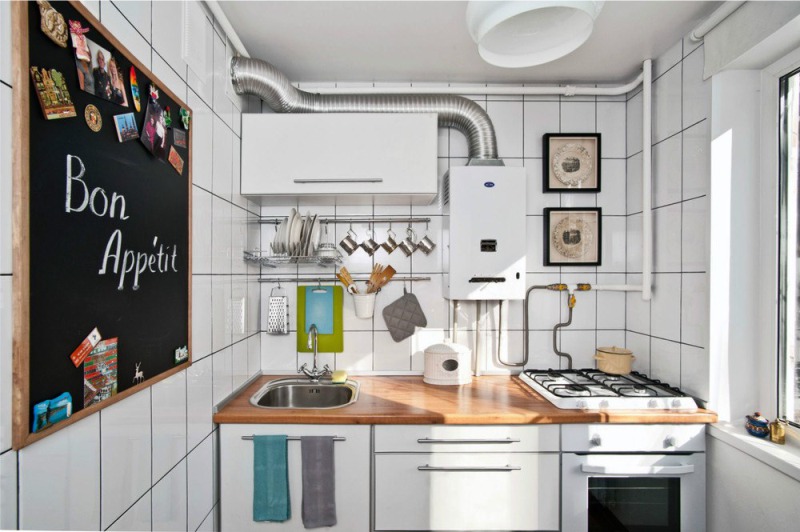
Very small kitchen layout
Planning Tips:
- To reduce the inconvenience of direct kitchen, you need to try to plan it so that the sink is in the center between the stove and the refrigerator.
- To increase the number of storage places, it is worth stretching the linear headset to the ceiling.
- Often a direct kitchen can be turned into a corner one if combine headset with window sill and arranging a sink or work surface in it, as shown in the following photo examples.
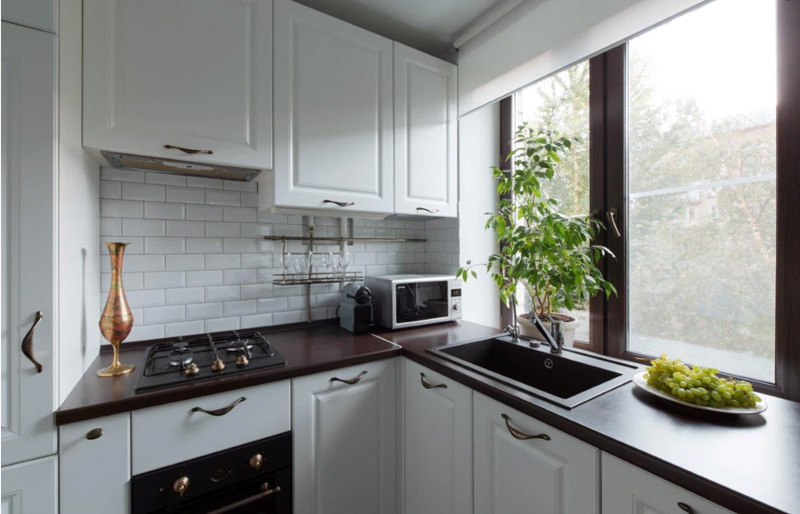
For details, see the material: All about planning direct (linear, single row) kitchen
L-shaped scheme
Pros: This layout is good for everyone - it is comfortable, versatile, compact and, at the same time, roomy due to the angle involved. The corner kitchen allows you to put a dining table in the center of the room.
Minuses: The L-shaped set is somewhat more complicated and more expensive to design, because the corner module requires additional fittings such as a carousel, a pull-out basket or a bookcase. If you leave the corner without additional equipment, it will be inconvenient to use it.
Ideal for: Rectangular kitchens, small and medium rooms.
Planning Tips:
- It is convenient to embed a sink or stove into a corner, especially if you make the corner not straight, but sloping.
- You can make one of the sides of the headset (see photo). For example, the one that is located at the entrance - so it will become more comfortable to enter the kitchen.
More details: How to plan the perfect corner kitchen
Here are some more photos of small kitchens with an angular layout.
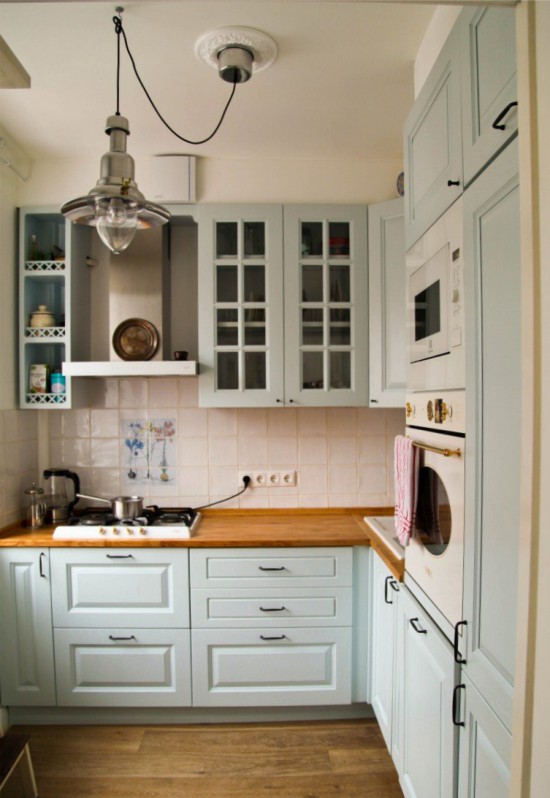
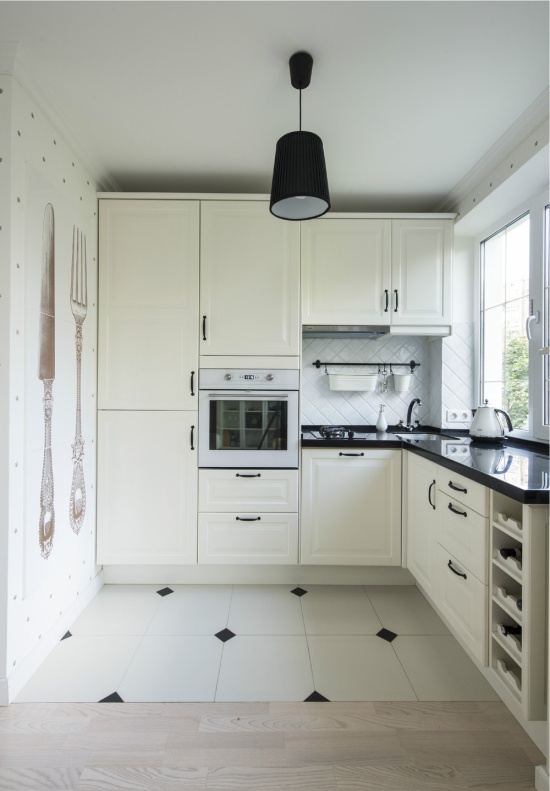
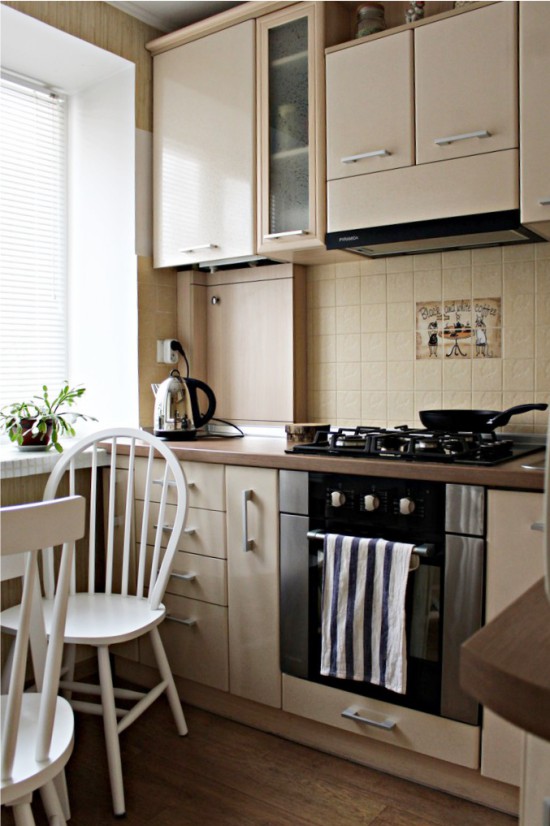
Two-row scheme
Pros: A set in two lines allows you to create a convenient “work triangle” and effectively use two walls of a narrow / elongated room.
Minuses: This layout option is convenient only if it is not too wide and not too narrow aisle - 120-150 cm wide. The second drawback is less security compared to other types of layouts, especially if the kitchen is passable. In addition, a two-row headset can create a feeling of tightness.
Ideal for: Elongated and narrow kitchens (2.2 m wide), walk-through rooms and utilitarian kitchens that do not have a dining area.
Planning Tips:
- It is more convenient, and most importantly safer, to plan the kitchen so that the sink and stove are in the same row, and the refrigerator in the other.
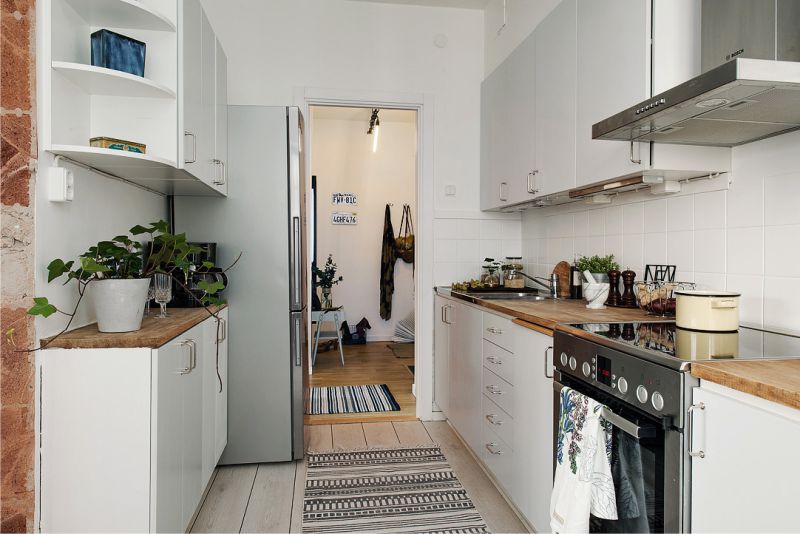
- It is better to make one of the rows shorter than the other, then it will be possible to find a place for a dinner table.
- AT square kitchen a two-row layout is also possible, in this case the dining table is placed in the center, for example, as shown in the following photo.
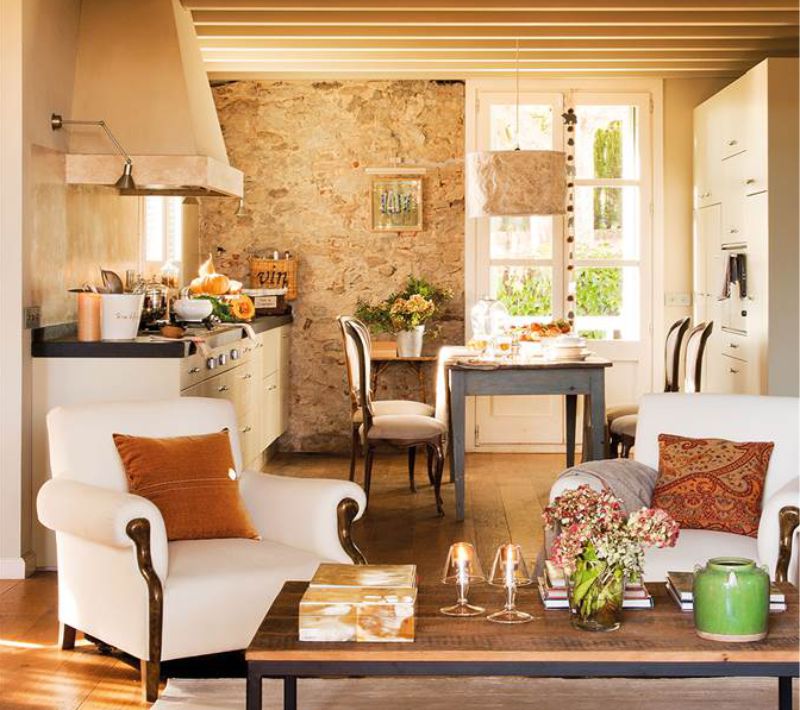
Below are other photos of interiors of kitchens with a parallel layout.
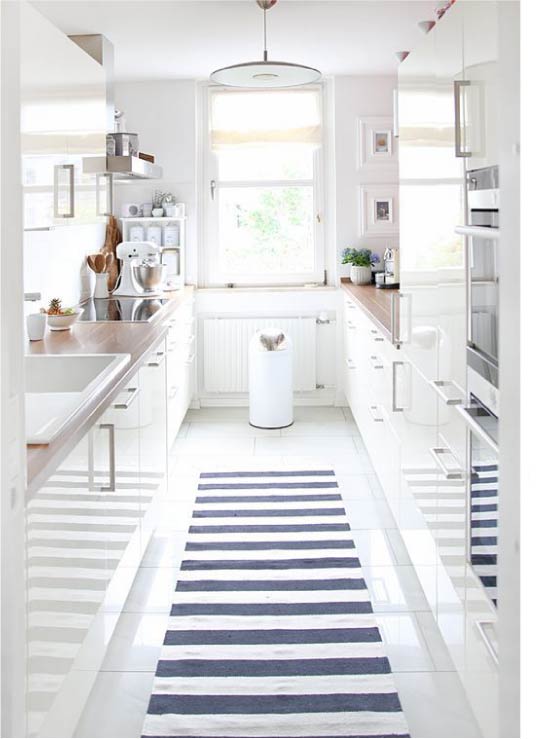
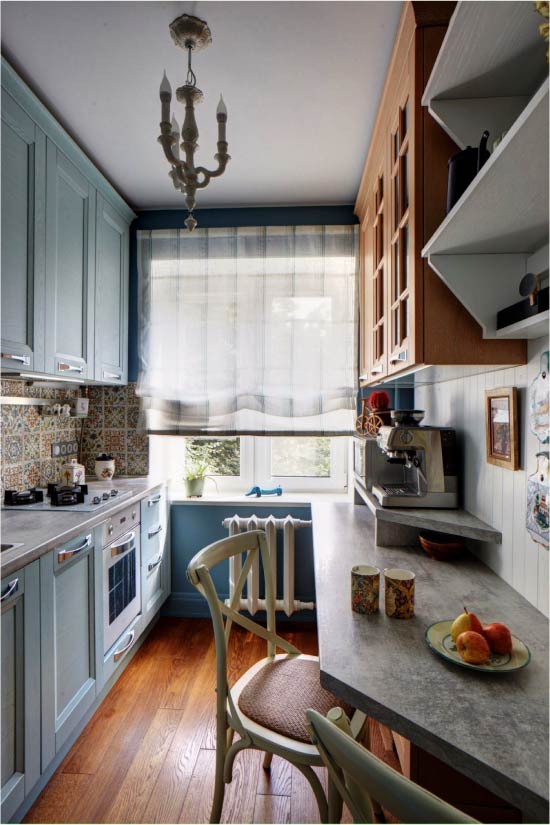
More details: How to equip a two-row kitchen-galley
U-shaped scheme
Pros: This is the most convenient option for planning, when everything you need is literally at the hand of the chef. Due to the use of three walls and corners, the U-shaped kitchen is very roomy.
Minuses: U-shaped headset is the most cumbersome and often requires a large area.
Ideal for: Especially suitable for square rooms (2.2 m wide), and kitchens for purely utilitarian purposes, as well as for kitchens in which they often cook a lot.
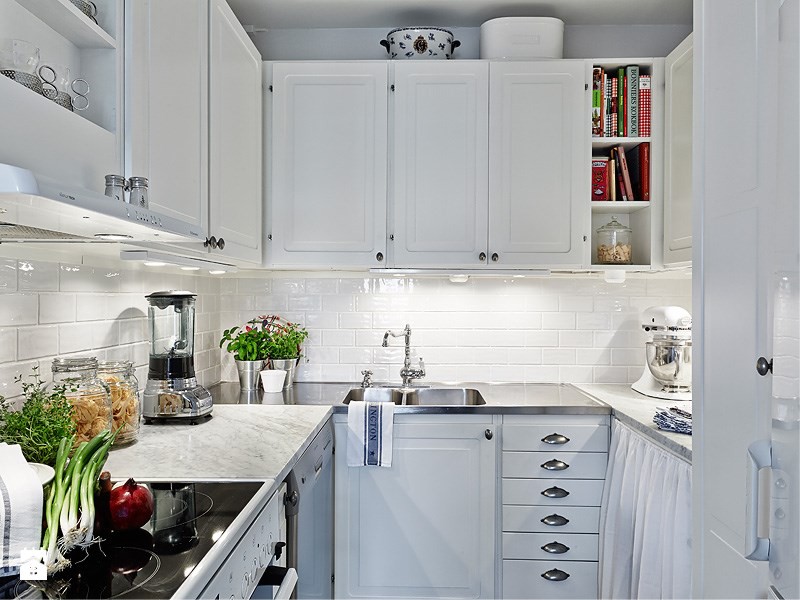
Planning Tips:
- U-shaped layout is possible even in a small kitchen in Khrushchev, just enough to use the window sill.
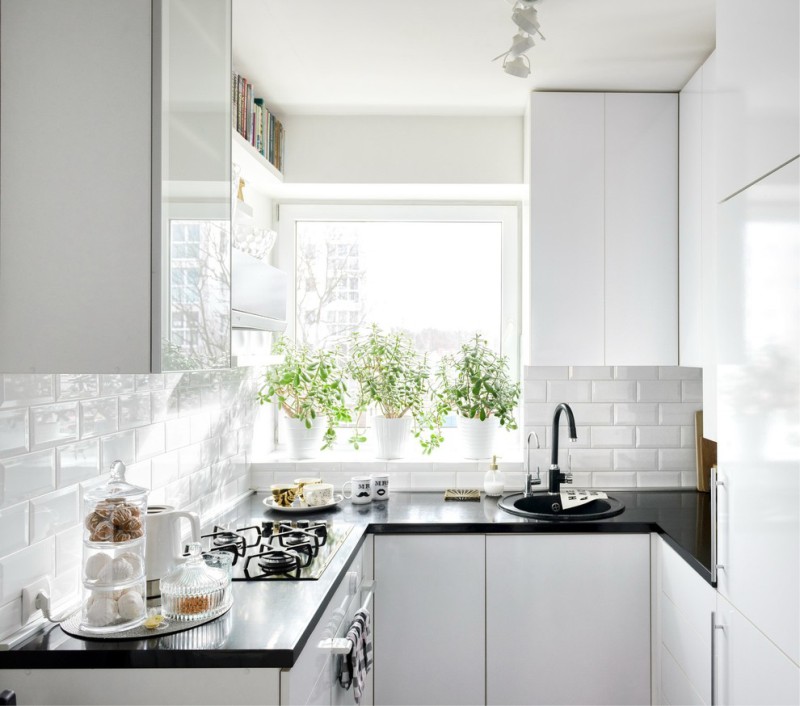
U-shaped layout of a small kitchen
- When planning a U-shaped headset, keep in mind that a passage of less than 100 cm and more than 180 cm will make the space uncomfortable.
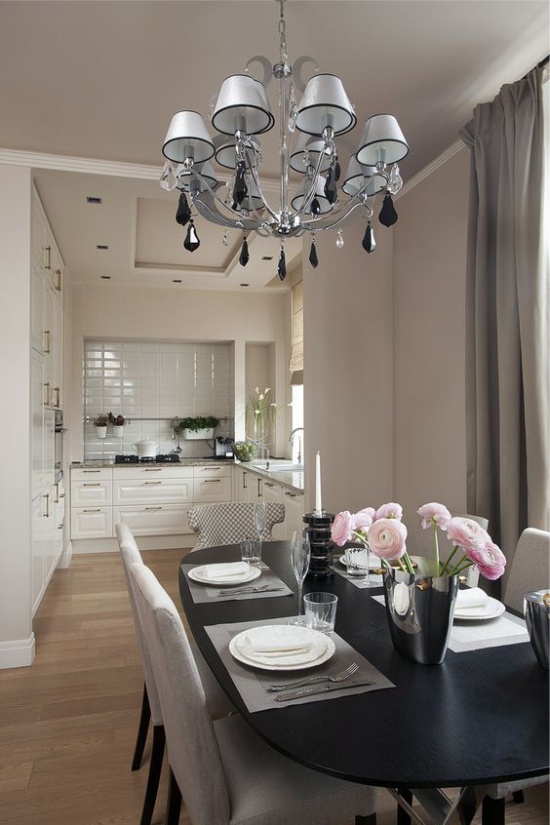
- To visually facilitate the interior of the U-shaped kitchen, leave one or two walls. without wall cabinets.
More details: How to equip the U-shaped kitchen
Island
Pros: The island will make the kitchen of any layout more convenient and functional. Also, the island can conveniently divide the space, say, into the living room and kitchen or into the working and dining area.
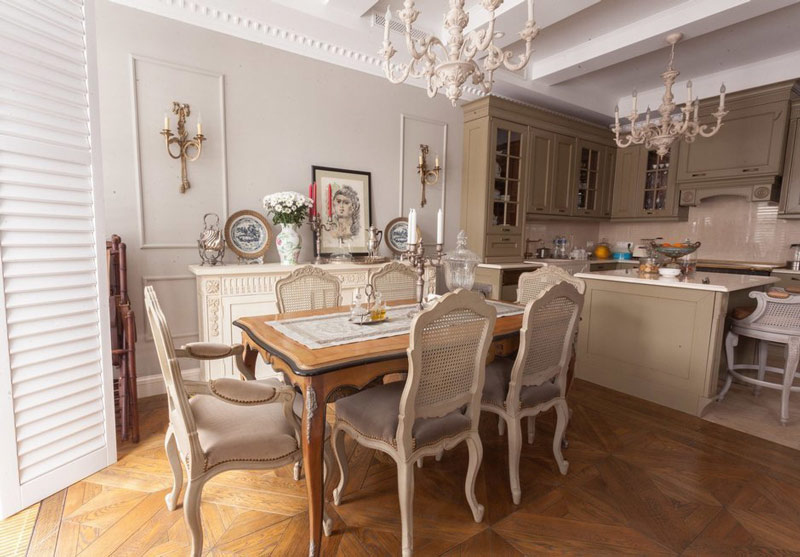
Minuses: Even a small island is only possible on big kitchen area of 18 square meters. m
Ideal for: Spacious kitchens and kitchens, united with living room/dining room.
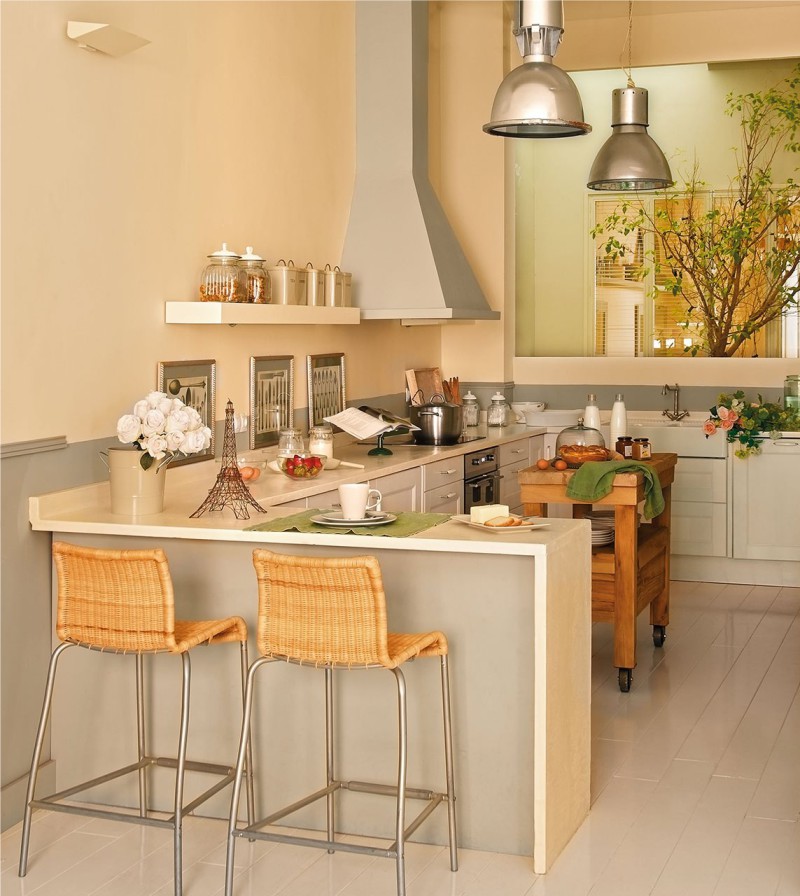
Photo planning kitchen with a mini-island
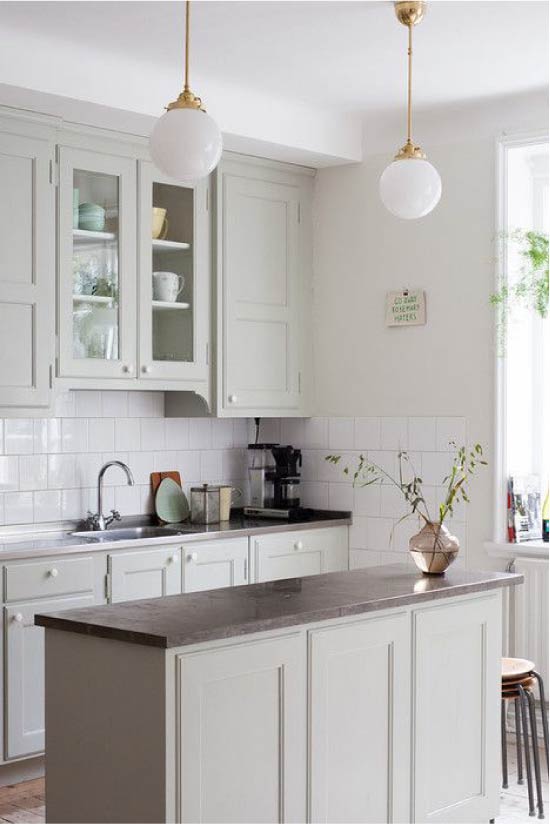
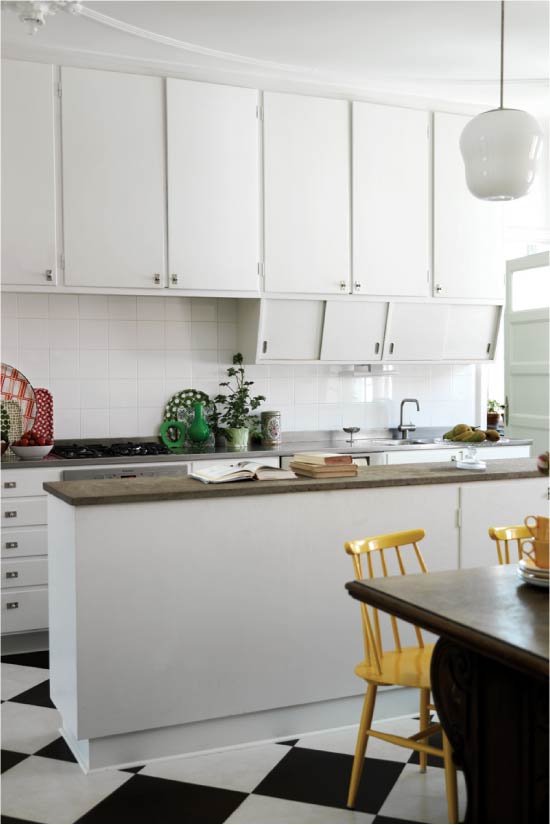
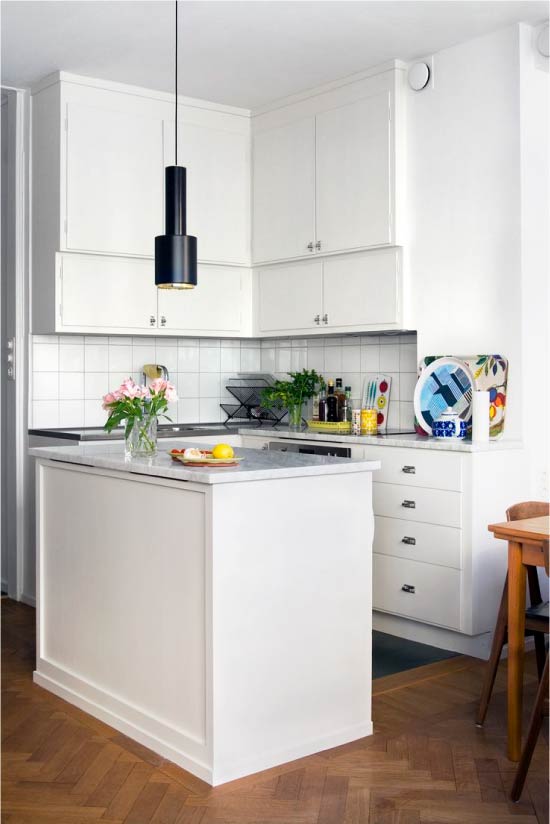
Planning Tips:
- The shape of the island must match the shape of the room.
- It is important that around the table-island there are passages with a width of at least 1 meter.
- Well, if the car wash is located opposite the island or even in the island itself.
- Embedding the hob on the island is easier than washing.
Read more Kitchen with an island - all the features of planning and design
Peninsular
Pros: The peninsula also allows you to make the kitchen more convenient and functional, to divide the space into zones. However, unlike the island, it is more compact (due to one of the ends resting against the wall / furniture).
Minuses: Still, "eats" a lot of free space.
Ideal for: Medium and large kitchens, studio kitchens and kitchens combined with a living / dining room.
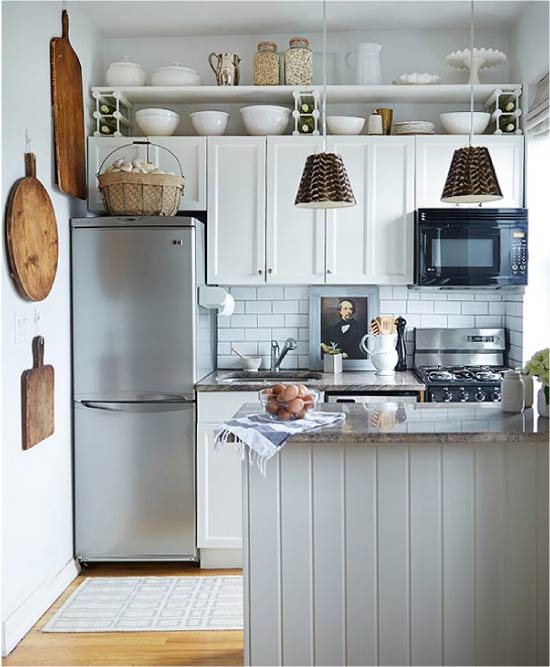
Layout of a small kitchen with a peninsula
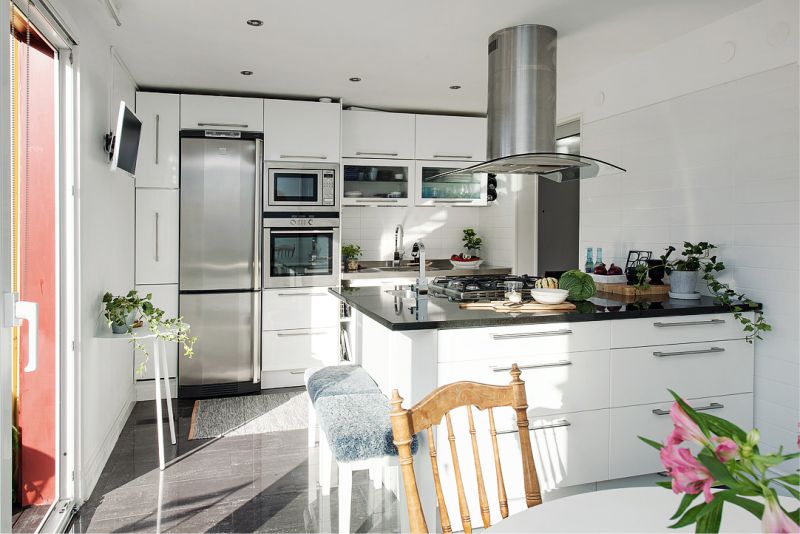
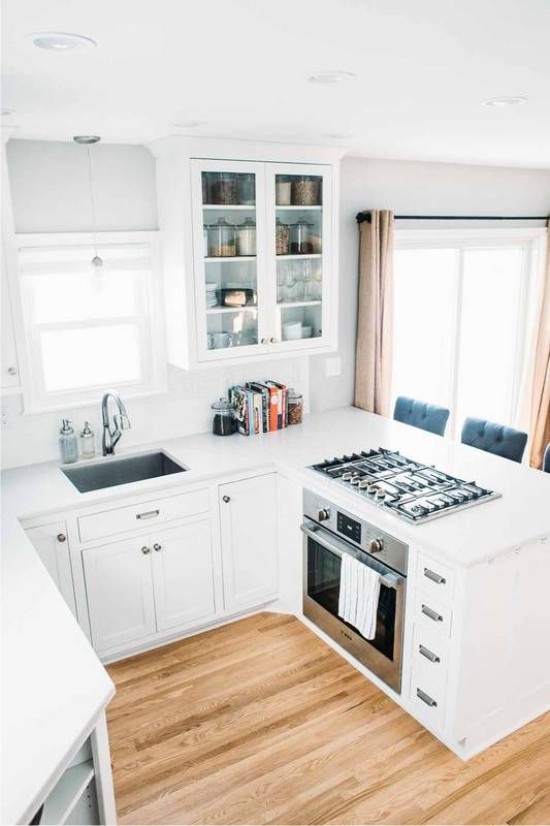
Built-in peninsula with stove
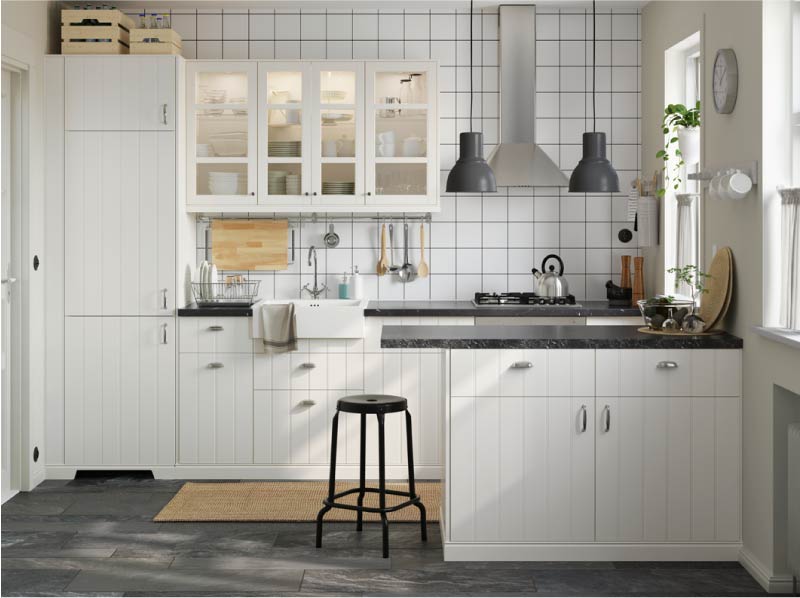
Planning Tips:
- On one side of the peninsula is convenient to equip bar counter. For those who lead a mobile lifestyle, this peninsula stand can replace a full-sized dining table.
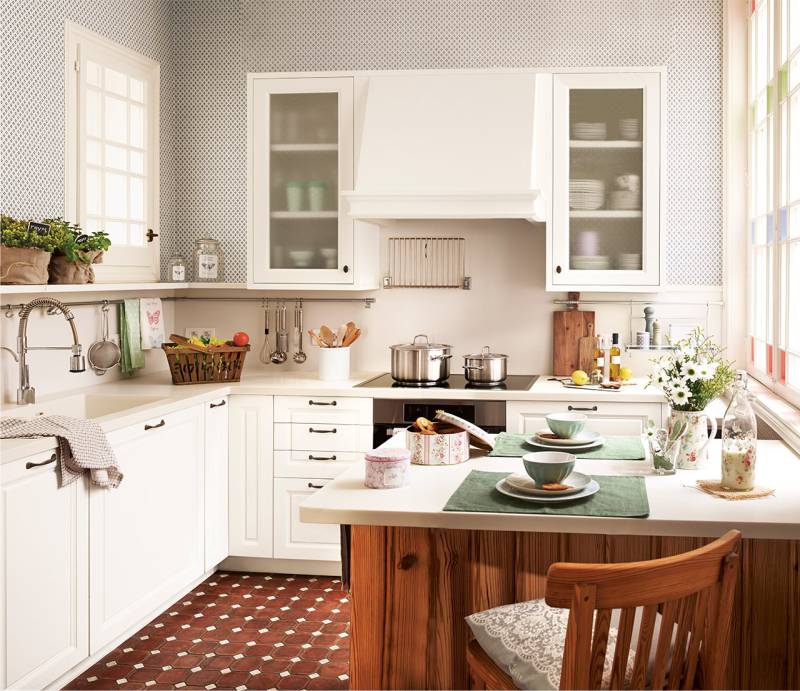
- Kitchen design 5 square. meters from repair to decor
- 10 tips on improving the kitchen area of 9 square meters. meters
- Design and repair of a small kitchen in Khrushchev - 13 proven solutions
- All about the design of a small kitchen - 16 super receptions and 70 photos
- Kitchen design 8 square. m in seven steps

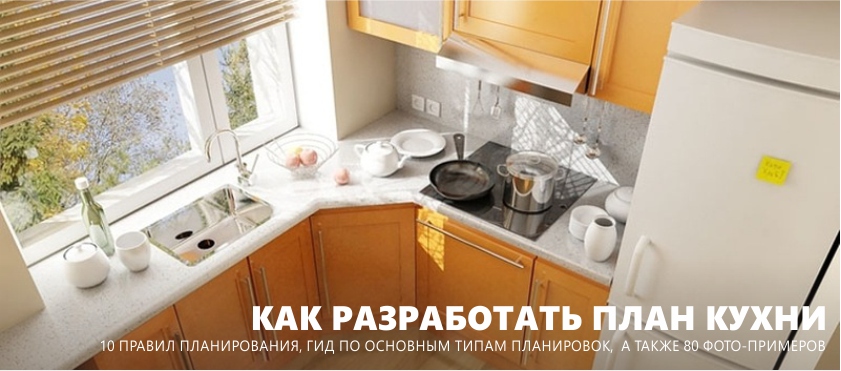
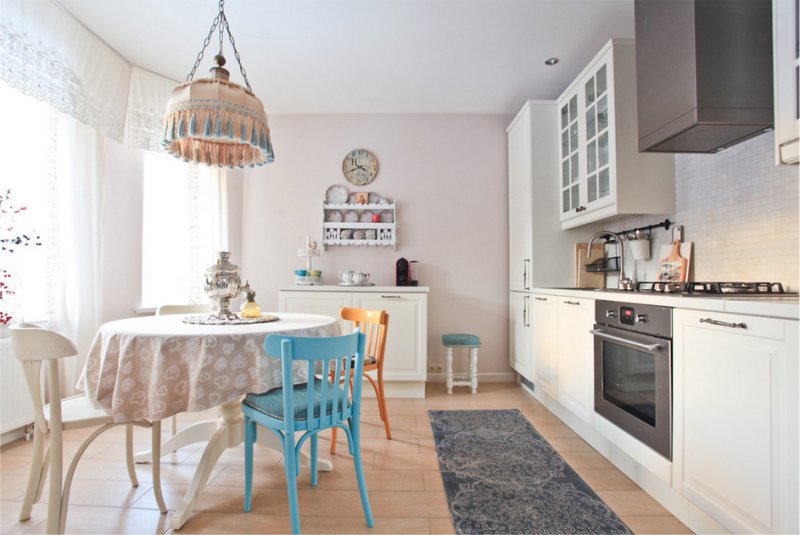
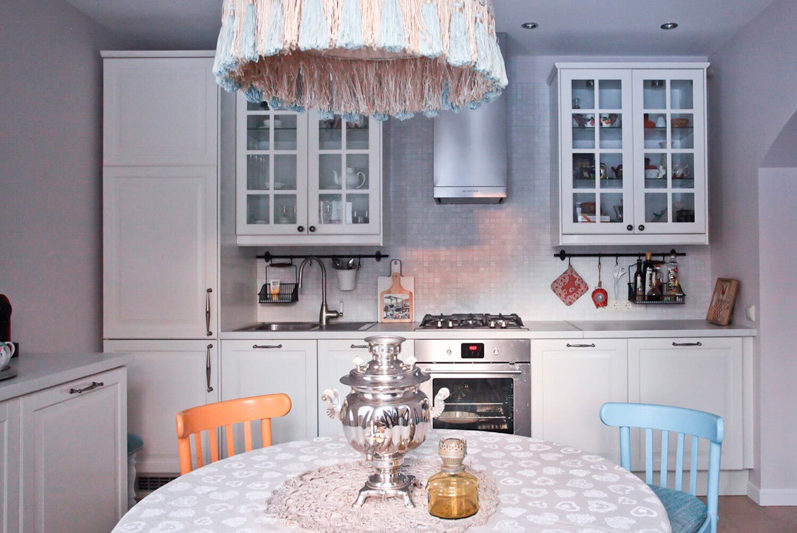
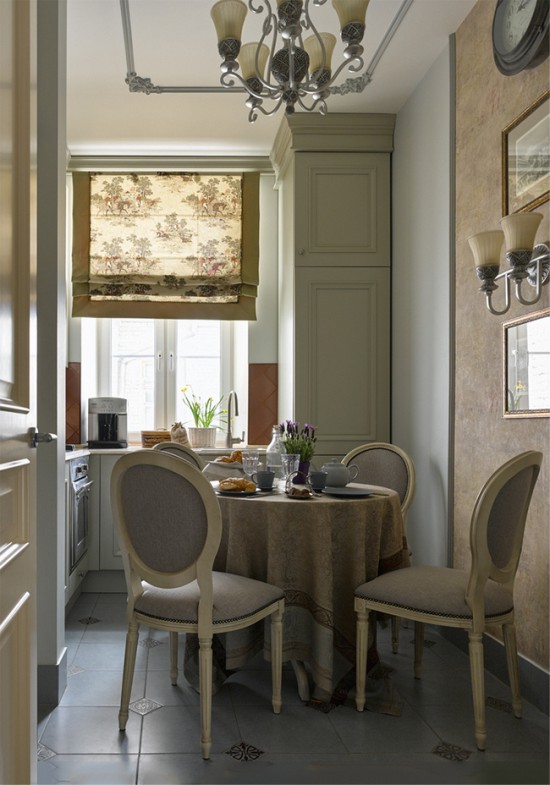
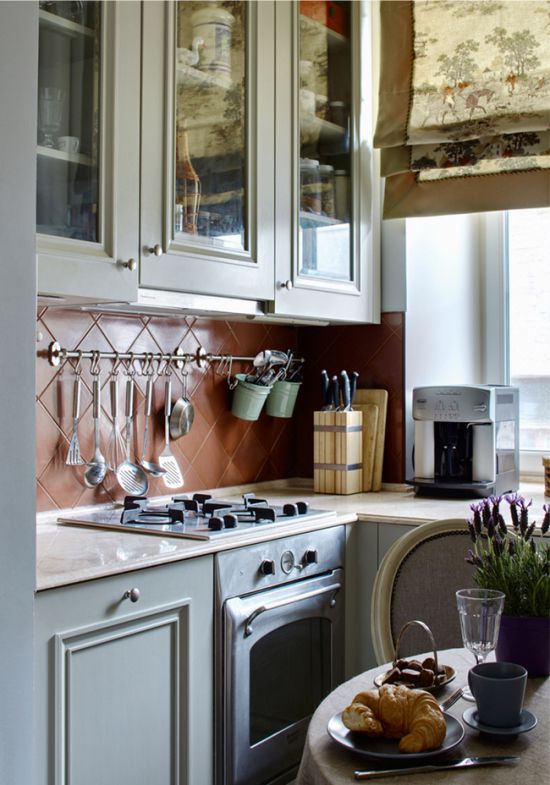
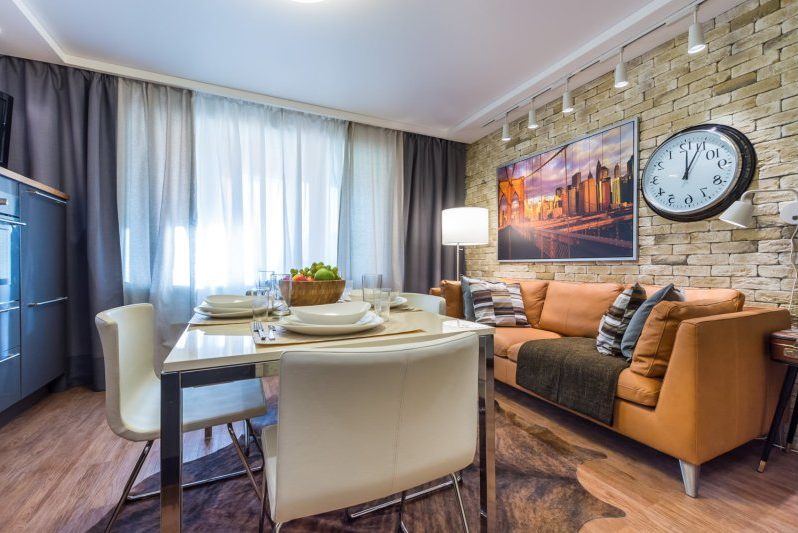
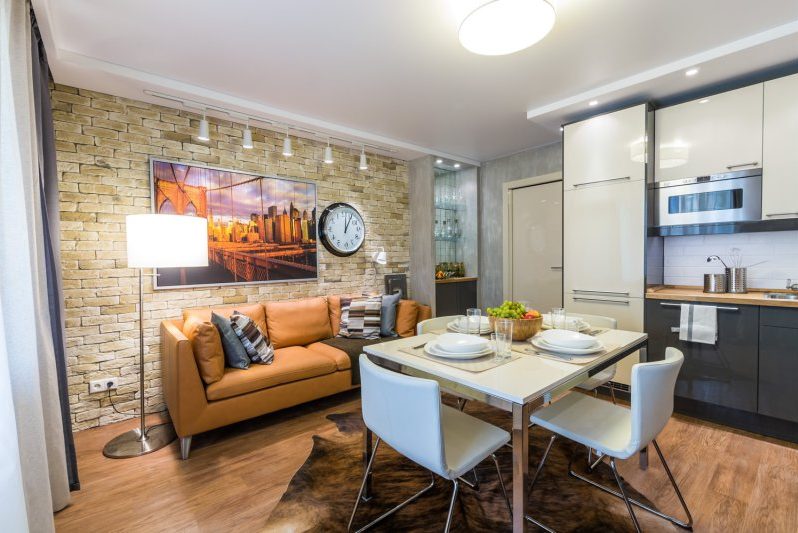
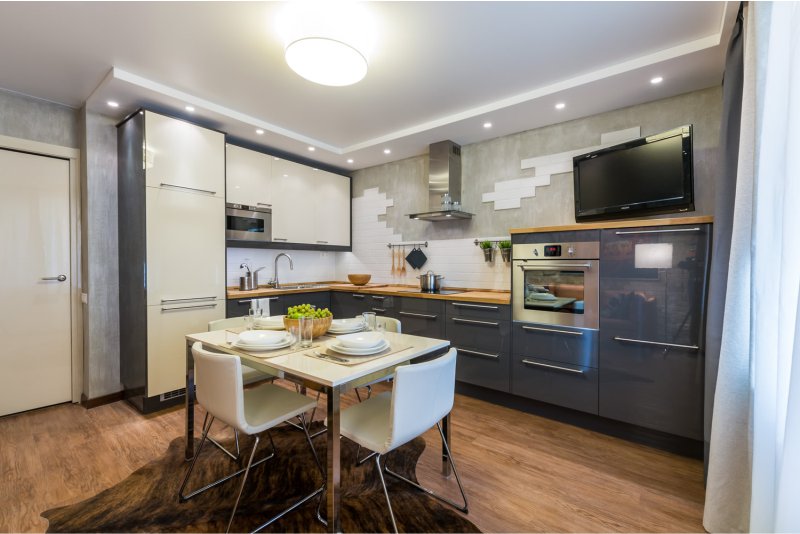
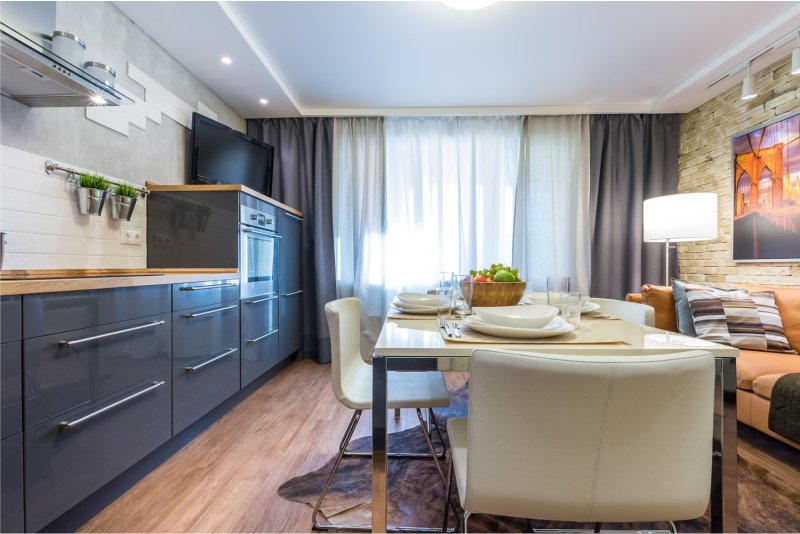
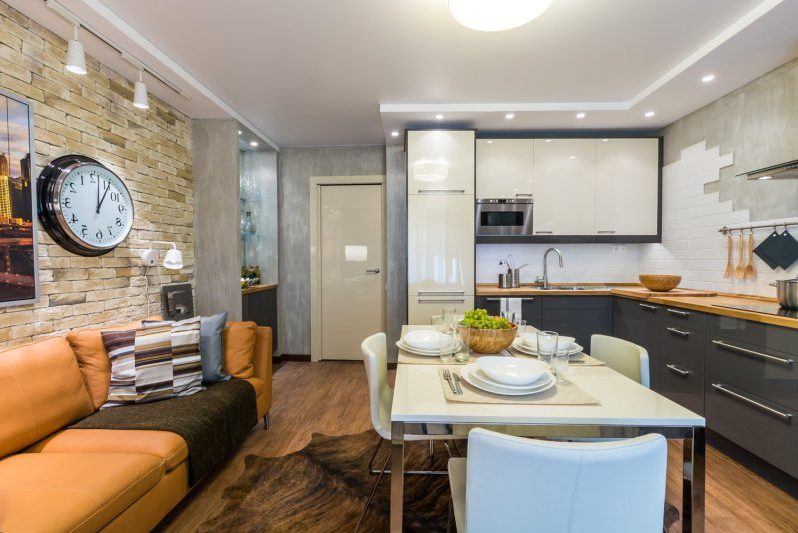
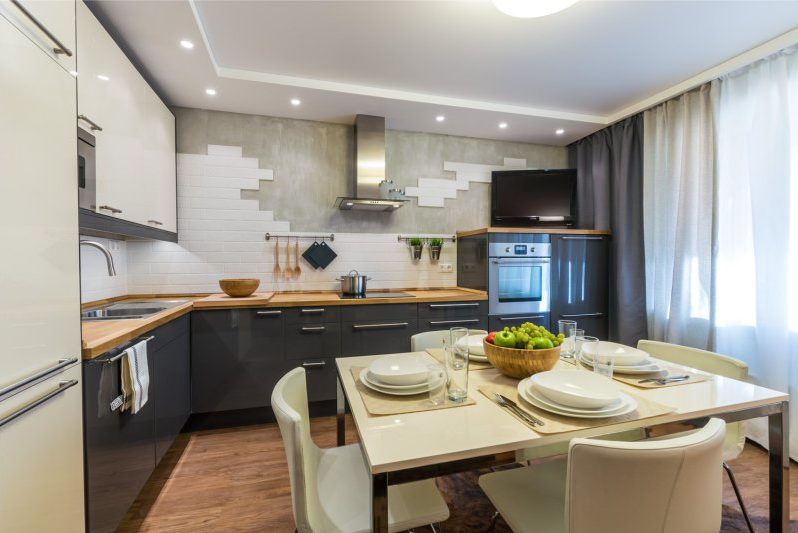
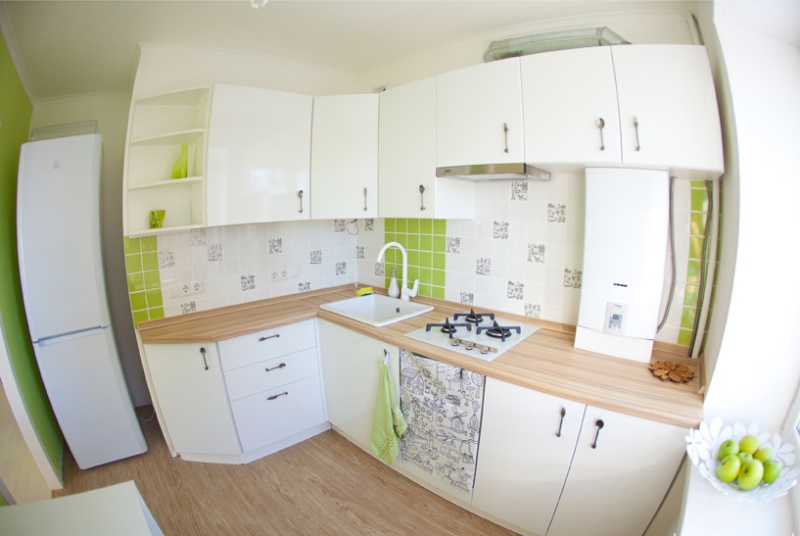
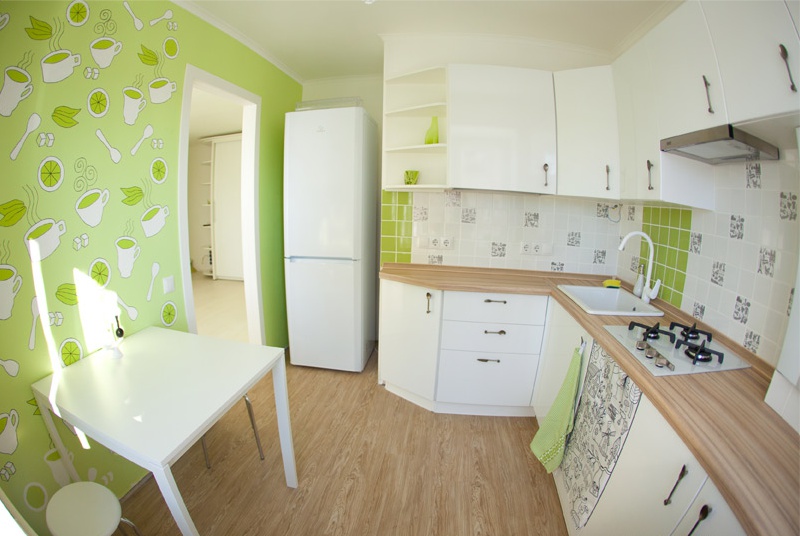
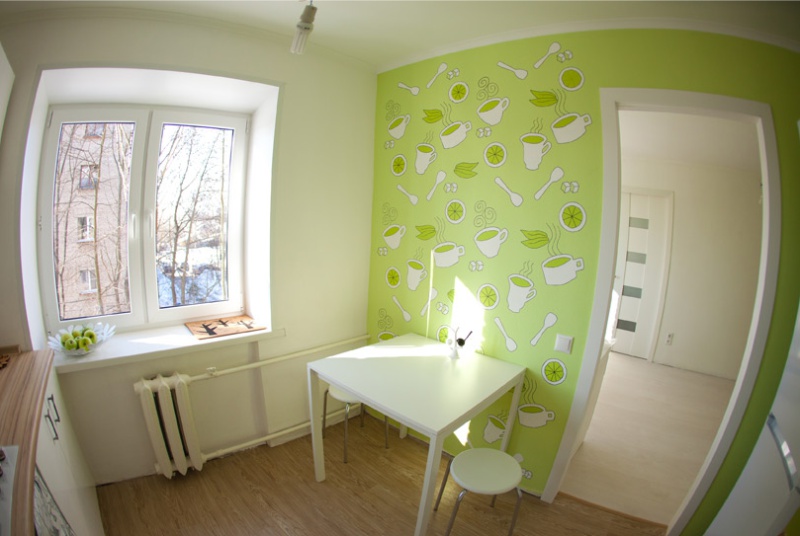
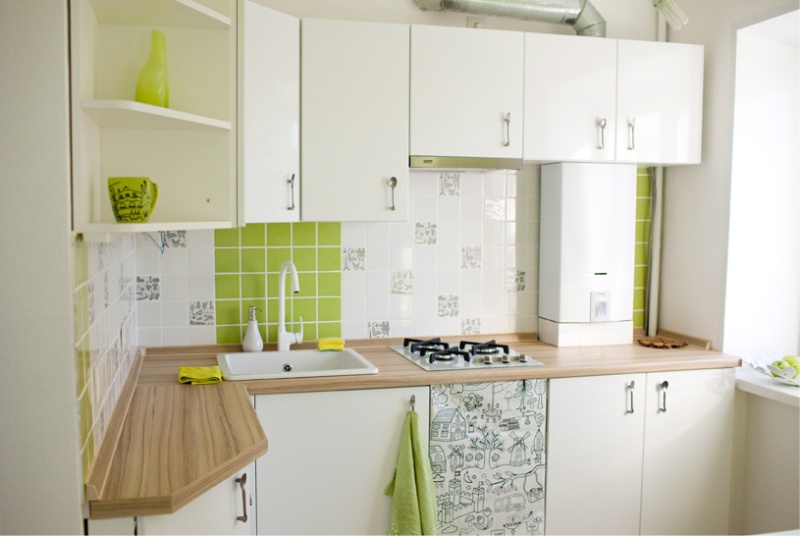
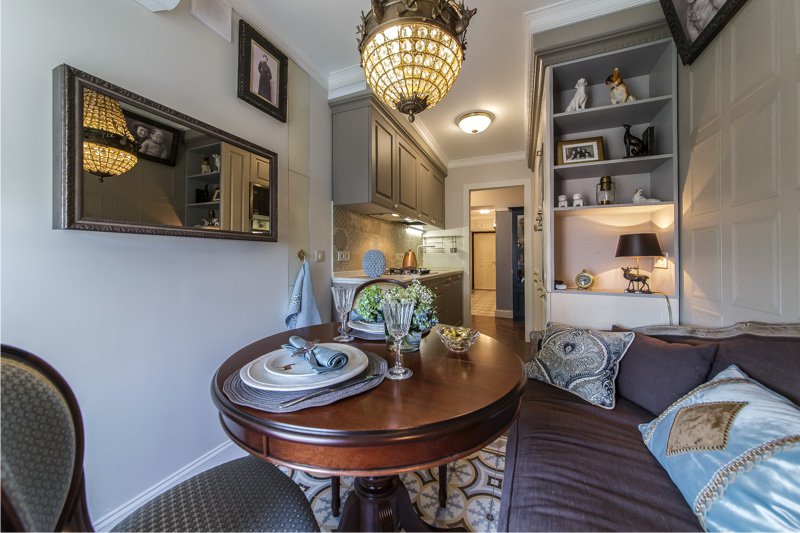
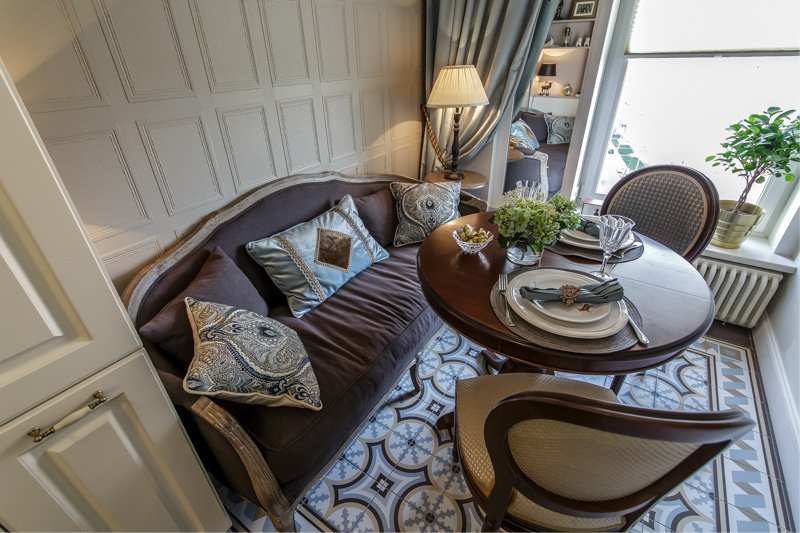
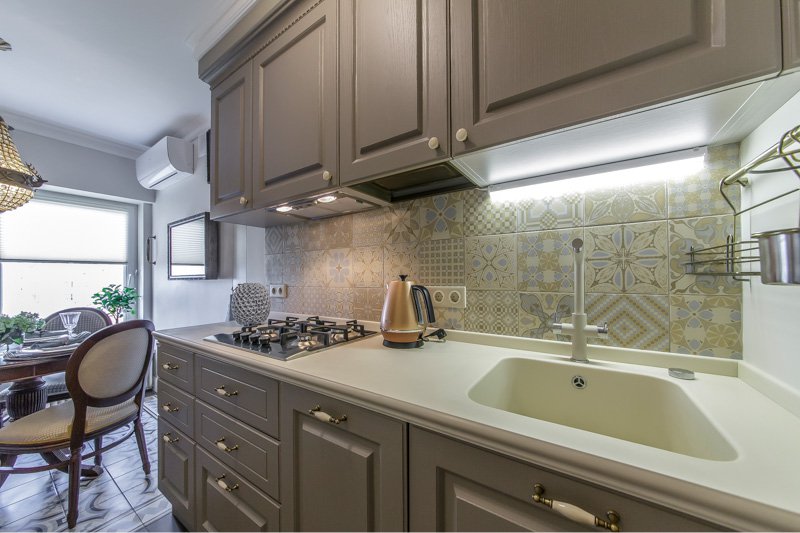
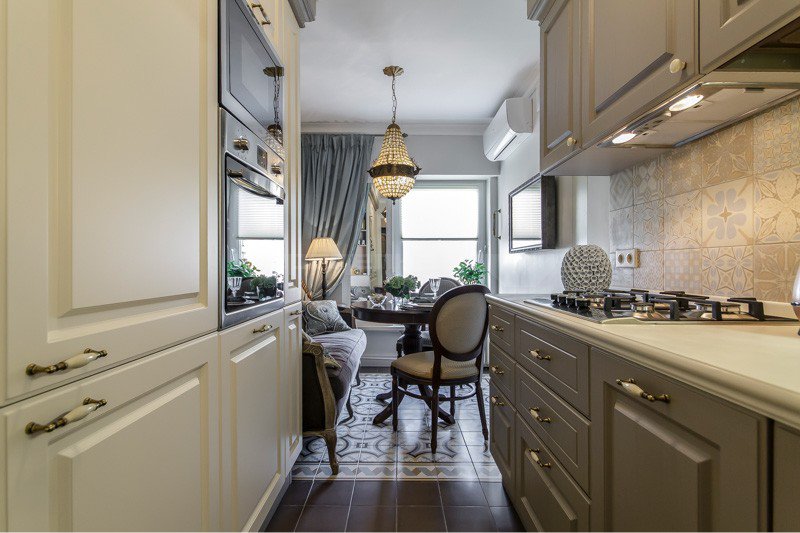
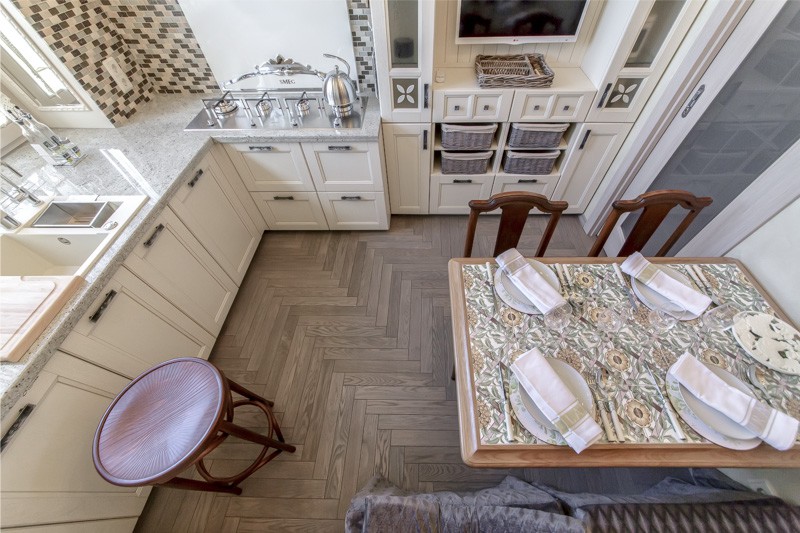
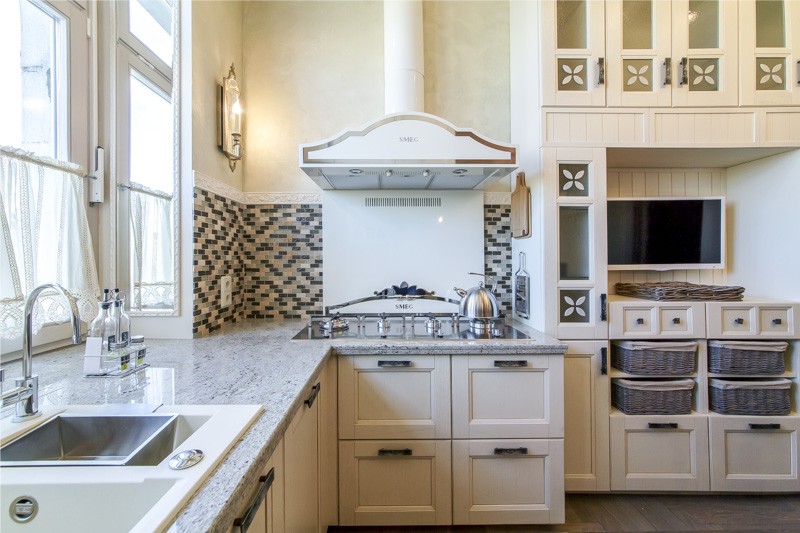
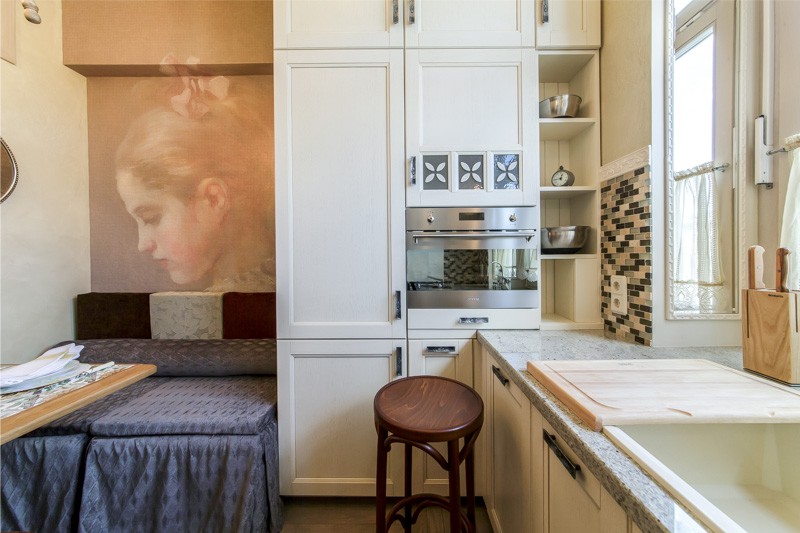
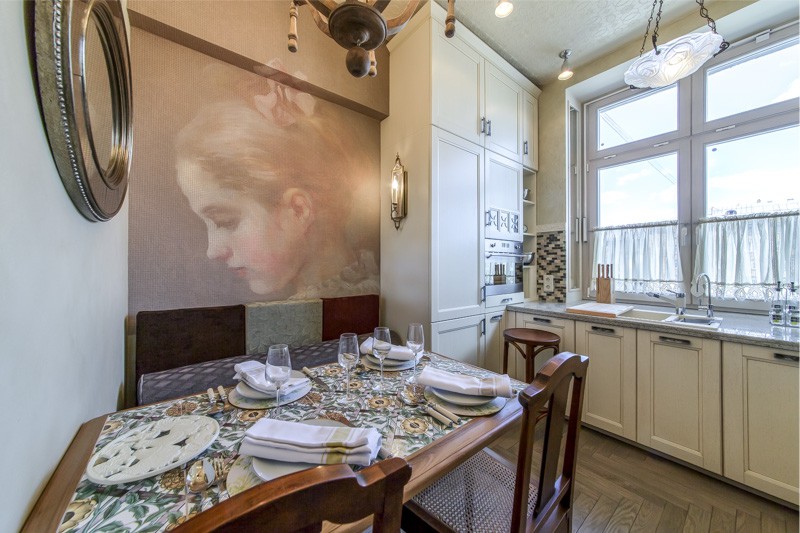
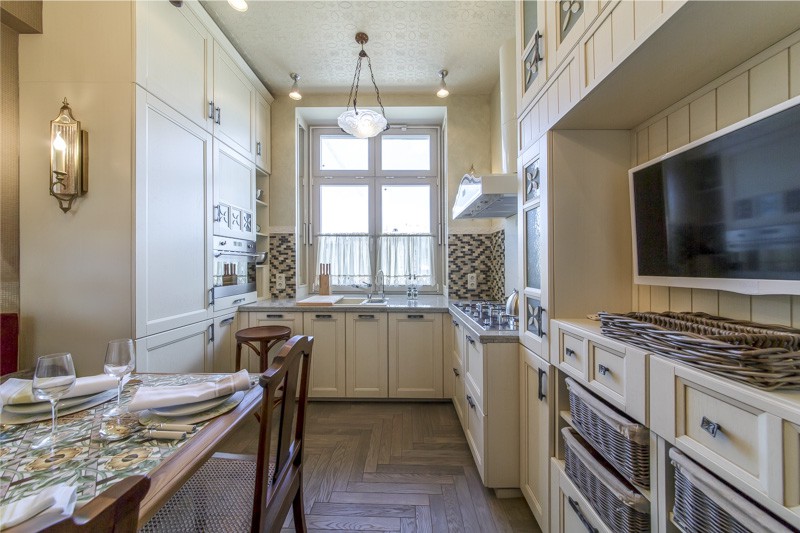
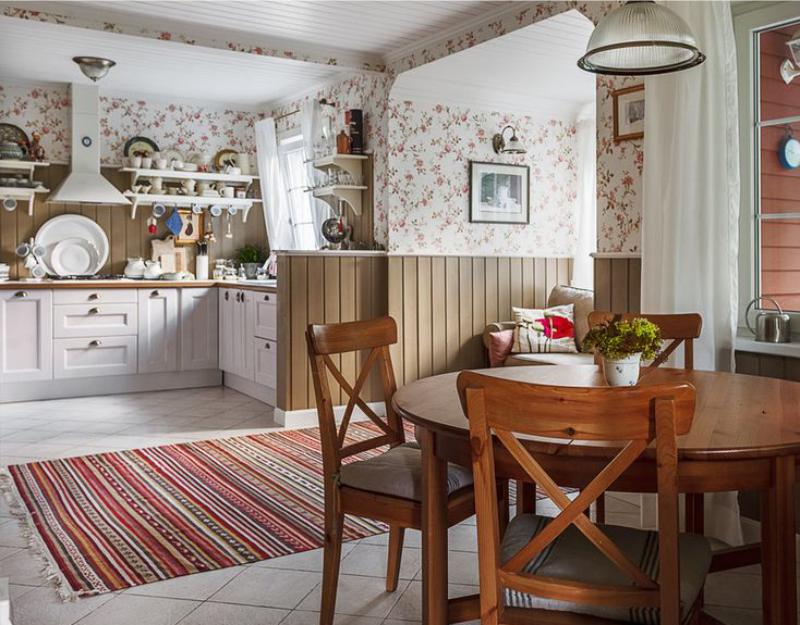
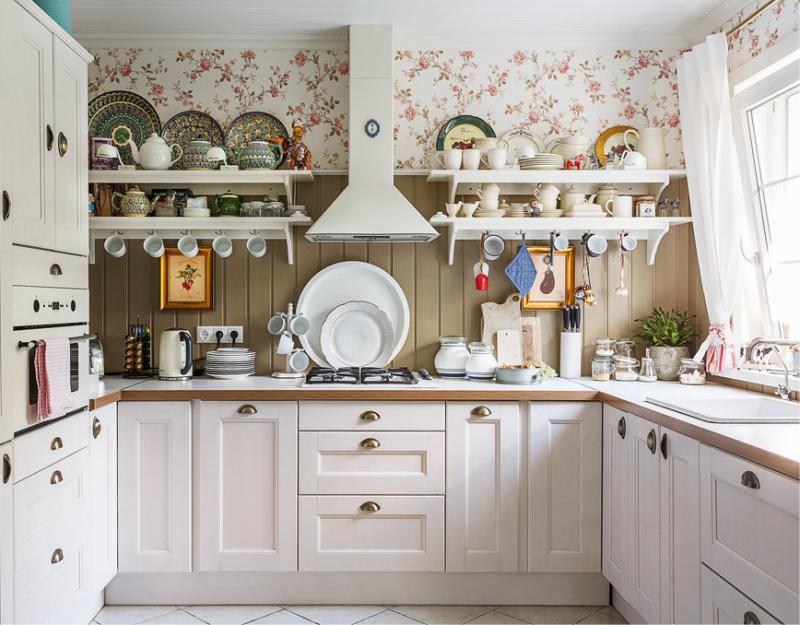
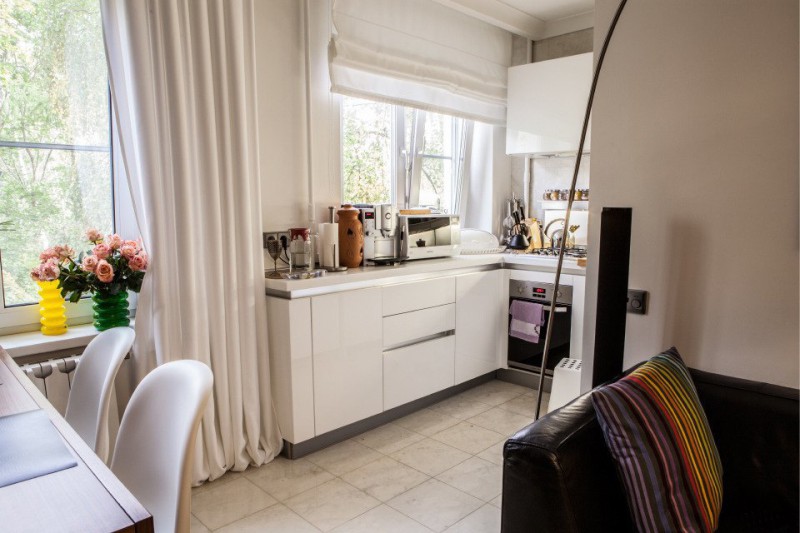
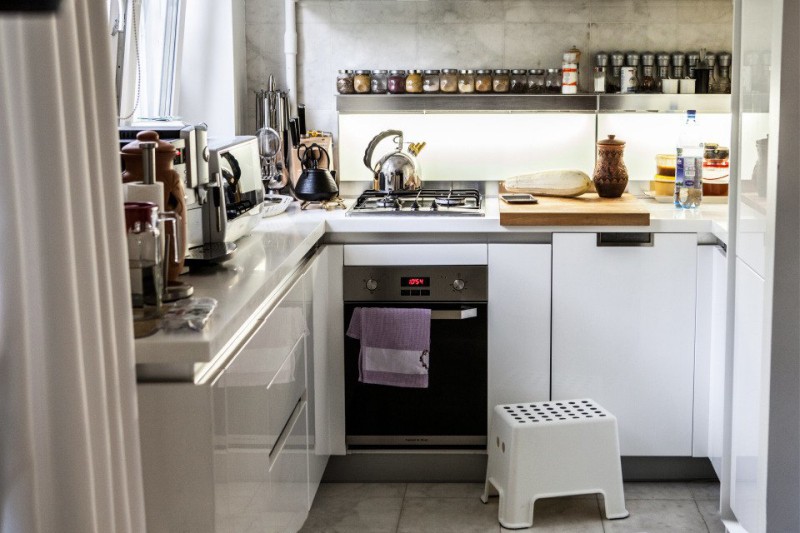
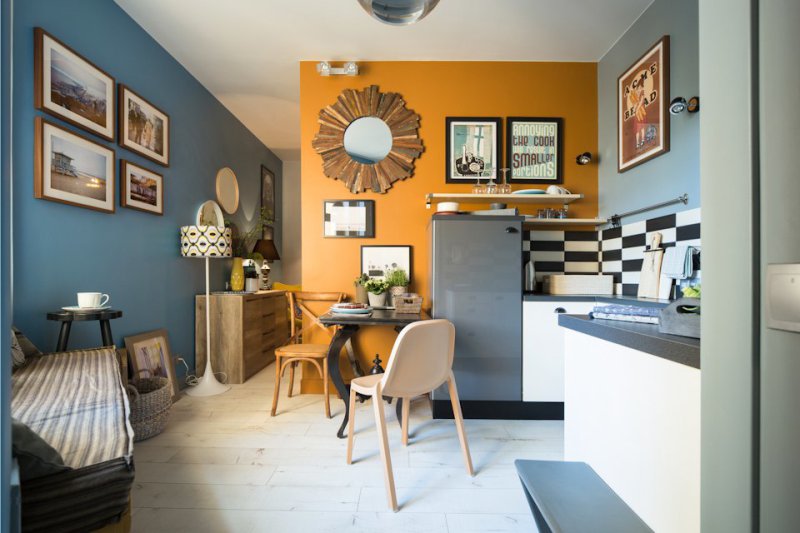
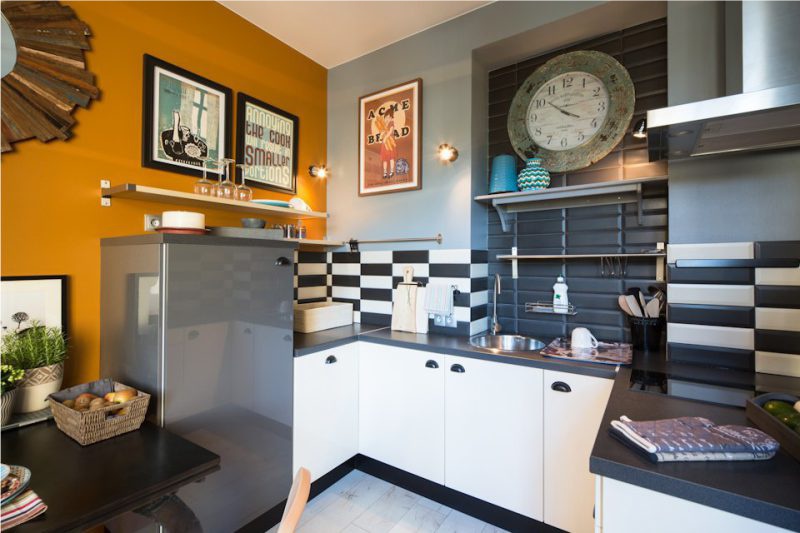
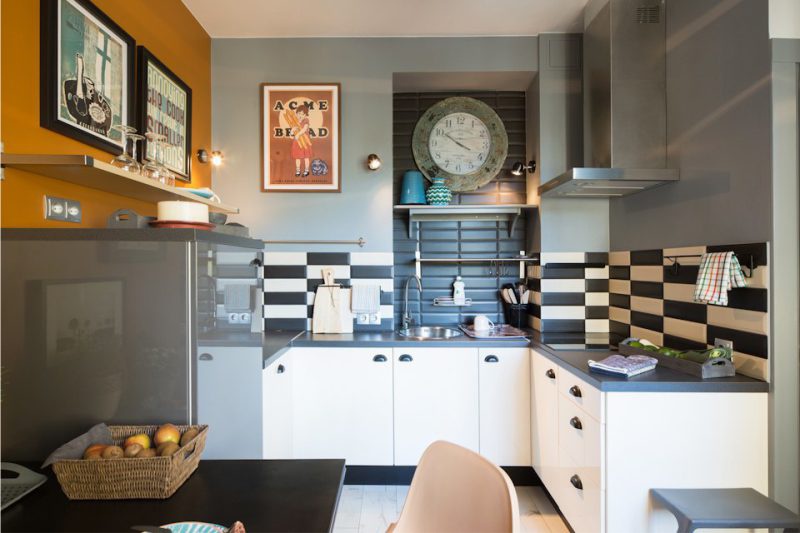
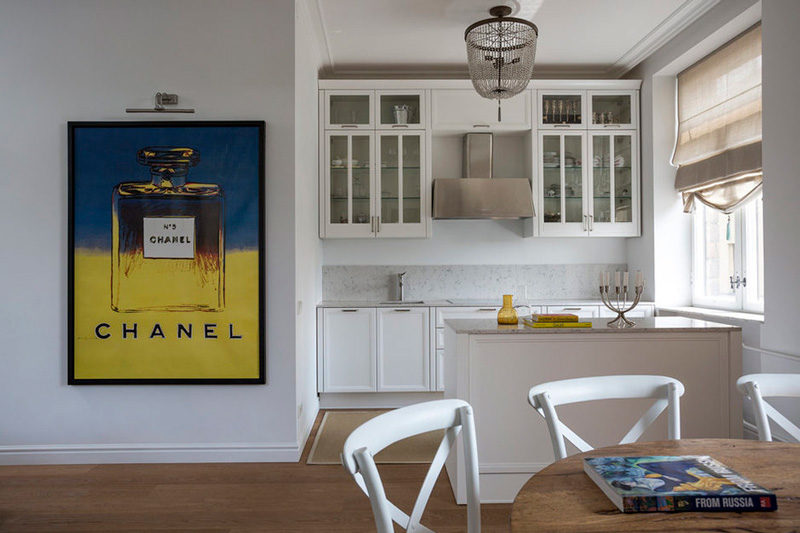
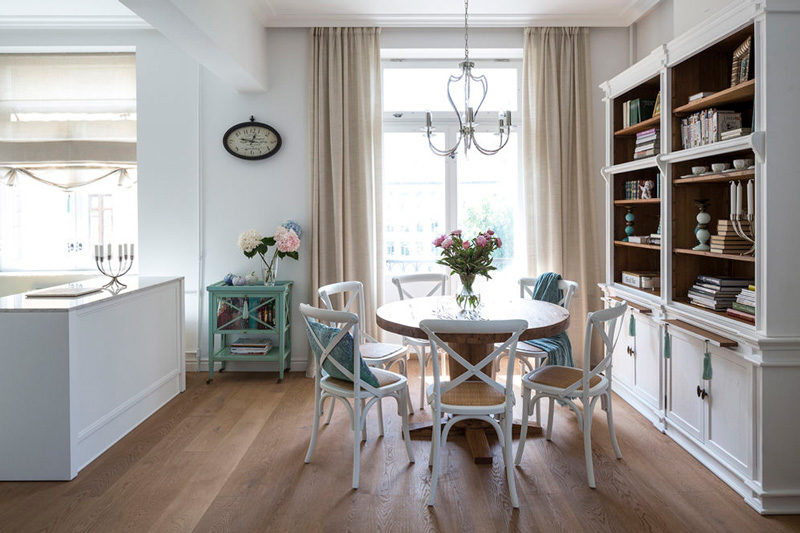
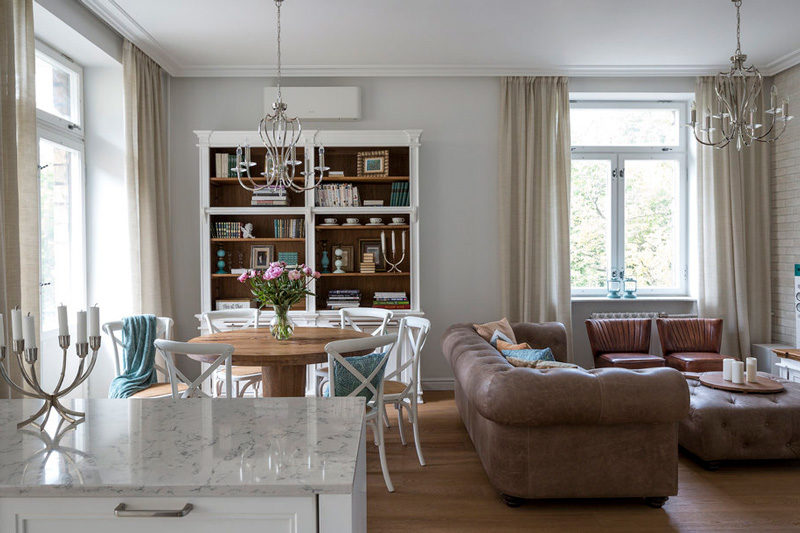
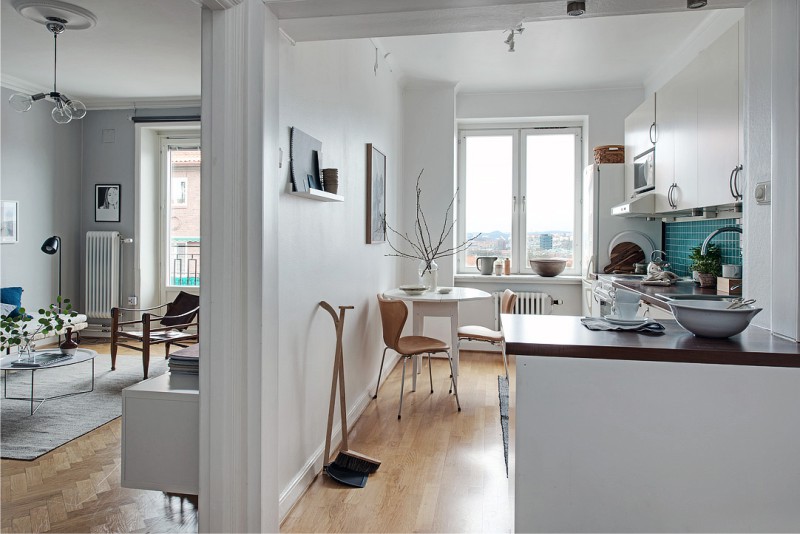
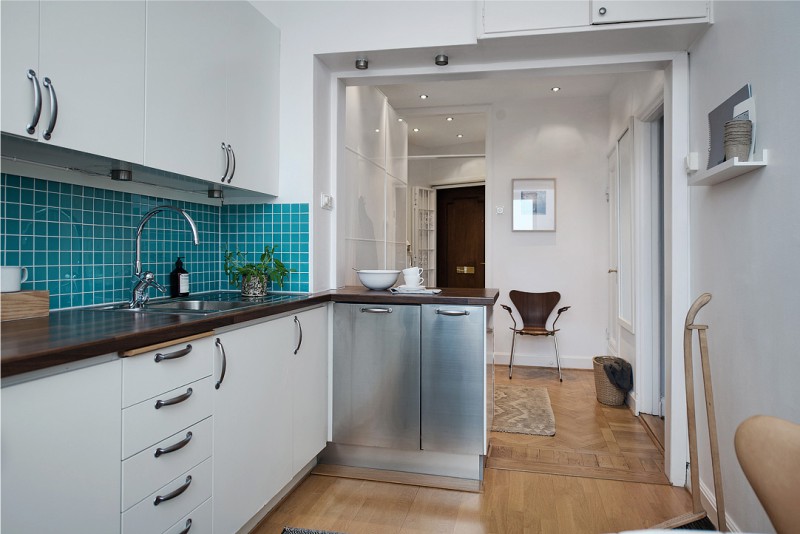

 (Rate the material! Already voted:16 average rating: 4,56 from 5)
(Rate the material! Already voted:16 average rating: 4,56 from 5)